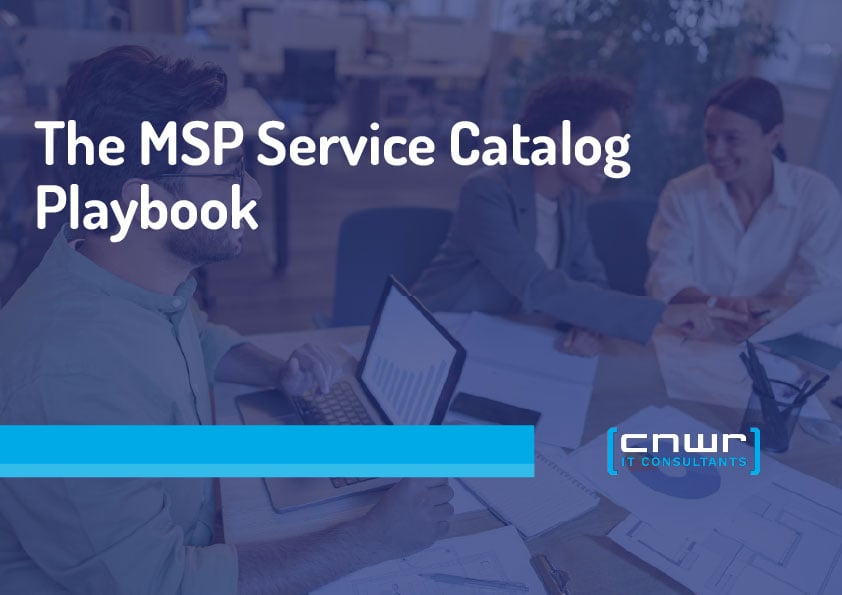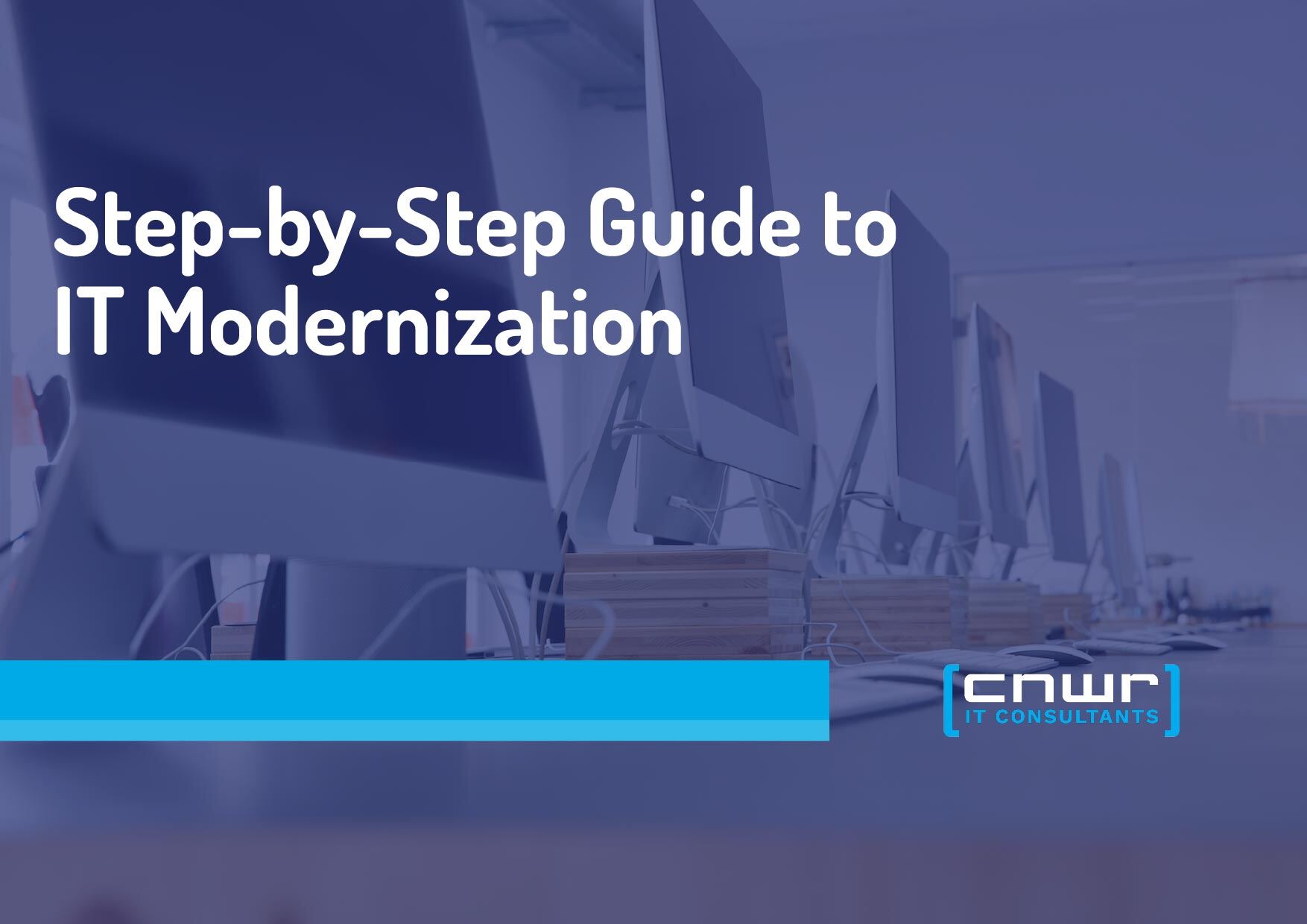Does your IT provider treat every project like 50 First Dates—constantly reinventing pricing, scope, and deliverables? If you’re stuck in endless quoting cycles, inconsistent service delivery, and reactive firefighting, it’s a sign your MSP may not have a true service catalog. Without one, even good providers struggle to scale or deliver predictable outcomes.
At CNWR, we believe that an MSP’s service catalog is more than an internal tool...it’s the backbone of consistent results. When it’s built inside an all-in-one MSP platform, it ensures every quote, ticket, and report connects seamlessly. This isn’t about reinventing the wheel, it’s about working with a provider that’s already engineered systems for transparency, accountability, and repeatable excellence.
In this guide, we’ll explore what a service catalog is, why it’s a hallmark of top-performing MSPs, and how CNWR uses this framework to deliver scalable, compliance-ready solutions that support your business goals.
Table of Contents
- What Is a Service Catalog in an MSP Context?
- The Benefits of a Service Catalog in an All-in-One Platform
- Building a Service Catalog: Why It Matters for Clients
- Ready to Work with an MSP that's Already Built the Playbook
- Key Takeaways
- Frequently Asked Questions
What Is a Service Catalog in an MSP Context?
Think of a service catalog as a provider’s official playbook — a clear, structured menu of every IT service offered, from foundational support to advanced cybersecurity. It’s not just a price list; it defines what’s included, how it’s delivered, and the standards clients can expect.
When an MSP operates from a defined catalog, you benefit from transparency, consistency, and faster support. You always know what you’re getting, what’s covered, and what falls outside the scope. That clarity helps eliminate misunderstandings, scope creep, and billing surprises.
Without a well-defined catalog, many MSPs fall into the trap of over-delivering services, undercharging for their expertise, and customizing solutions on the fly. This leads to inconsistent service quality and unpredictable profit margins. A service catalog eliminates this chaos, bringing consistency, accountability, and clarity to your entire operation.
The Benefits of a Service Catalog in an All-in-One Platform
Integrating a service catalog directly into an all-in-one MSP platform isn’t just operational efficiency...it’s client experience done right.
-
Streamlined Onboarding and Communication: A standardized catalog means consistent service definitions and faster quote turnaround, so you can move from proposal to protection without friction.
-
Predictable Performance: Defined SLAs and automated workflows ensure requests are handled quickly and consistently.
-
Smarter Growth: A service catalog supports scalable operations, allowing your MSP to grow without losing reliability or visibility.
-
Transparency and Trust: When you know exactly what’s included in your service plan, and how it’s delivered, you can focus on business outcomes instead of IT guesswork.
If you’re comparing providers our blog, From Options To Outcomes: The Ultimate Guide To Managed Services Tools, offers insights into how to identify MSPs with the right infrastructure to support long-term growth; including integrated catalog and automation systems like CNWR’s.
Building a Service Catalog: Why It Matters for Clients
Creating a service catalog isn’t something you as a business need to manage...it’s what your MSP should already have perfected. Behind the scenes, that catalog represents countless hours of refining processes, defining deliverables, and automating workflows.
At CNWR, we’ve spent decades building and refining our service catalog so our clients don’t have to worry about IT inconsistencies or compliance gaps. Our systems ensure every engagement (from onboarding to monthly maintenance) runs according to proven, documented standards that scale with your business.
Ready to Work With an MSP That’s Already Built the Playbook?
Scalable, predictable IT support doesn’t happen by accident. It’s the result of a service catalog designed, tested, and refined inside an all-in-one MSP platform. CNWR has already done that work — so you can focus on yours.
With decades of experience helping organizations align technology with strategy, we’ve built the systems that make IT management seamless, transparent, and compliant. When you partner with CNWR, you’re not just choosing an MSP — you’re gaining access to the playbook that powers operational excellence.
Contact CNWR today to experience how our service catalog framework transforms IT complexity into clarity and scale.
Key Takeaways
- A service catalog is a standardized menu of your MSP’s offerings that details services, pricing, and SLAs.
- Integrating a service catalog into an all-in-one MSP platform streamlines sales, enhances efficiency, and boosts profitability.
- Start building your catalog by defining your core services, then use your platform to automate workflows and standardize delivery.
- A well-defined catalog improves client trust through transparency and sets clear expectations.
Frequently Asked Questions
- How does a service catalog prevent scope creep?
By clearly defining what is included (and not included) in each service package, a service catalog acts as a contractual reference point. When a client requests work that falls outside the defined scope, you can easily identify it as a new project or an add-on service, ensuring you are compensated for all the work you perform. - Can a service catalog help with sales and marketing?
Absolutely. A service catalog is a powerful sales tool that standardizes your offerings, making it easier for your sales team to craft consistent, compelling proposals. It also helps your marketing team create targeted campaigns around specific service bundles, attracting the right clients for the services you are best equipped to deliver. - Do I need to build my entire service catalog at once?
No, and it's better if you don't. Trying to define all your services at once can be overwhelming. Start with your most common and profitable services. Implement them in batches, gather feedback from your team and clients, and gradually expand the catalog. This iterative approach ensures a more successful and manageable rollout.




